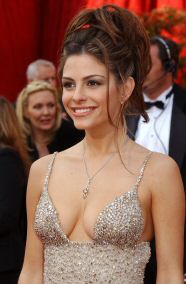The Oscar Machine Comes to Town
March 02, 06
On May 16, 1929 two hundred and seventy people attended a black-tie banquet at the Blossom Room of Hollywood Roosevelt Hotel, for which they had paid $5 a ticket. After the dinner, Douglas Fairbanks, the president of the
|
|
In the days and weeks leading up to the events celebrities (or more often, their stylists) are invited to choose items donated by a particular company or brand. This year, the Diamond Information Center (DIC) is hosting a "Diamond Aquifer" a "mystical retreat featuring a variety of therapeutic and beauty treatments all using diamonds." Based on the premise that the week before the Oscars can be especially tense, the DIC has "set up a special place at Soho House LA for celebrities to get away and ease the pressures of what can otherwise be a week spent on edge."
The treatments and therapies on offer at the Diamond Aquifer include, intuitive readings, diamond astrological readings, diamond massage in which "seven diamonds are placed on the essential chakra points along the center of the body, helping to bring mind, body, and spirit into alignment."
Kwiat Diamonds and Eastman Kodak Company have joined together to "present the ultimate luxury suite". Each best actress nominee will receive an EasyShare camera personalized with their initials in 75-brilliant cut diamonds – the value of each camera? $20,000.
And then there's the night itself, when designers and jewelers vie to dress the stars. It's big business. Not only do celebrities get dressed for free, but often they are paid for the pleasure of wearing a certain brand. According to TimesOnline, for the 2005 awards, Hilary Swank originally borrowed jewelry from jeweler Harry Winston, but returned it after accepting an estimated $90,000 from Chopard to wear its design instead. $90,000 is small change for a company getting its designs splashed across the news media the world over.
This week, big name jewelers have been running from celebrity home to celebrity home to 'fit' them for the awards. And it's not just the female stars who take advantage of this personal approach. Male stars are also using the services of 'celebrity' jewelers to ensure that they sparkle on the night.
As the Oscars approach, the press is showered with releases and information about the forthcoming events, which they then filter down to the general public. But does it pay off? How much impact does the media brouhaha have on the jewelry industry at large? It cannot be denied that there is nothing like 'free' advertising. In 2004, NCDIA's $2.5 million dress worn on the red carpet by Entertainment Tonight presenter Maria Menounos received widespread media coverage and, possibly, increased the attention paid to colored diamonds.
When Harry Winston loaned Sharon Stone a $400,000 necklace to wear to the Oscars, she claimed it was a gift and didn't want to return it. She later sued the jeweler for $12 million, claiming breach of contract. However, the media attention paid to the incident shows that there is no such thing as bad publicity.
But even when the event is over and the borrowed jewels have been returned, the PR machine is still running. Bodies such as the DIC, which is sponsored by De Beers, and the Platinum Guild, are quick to supply lists and images of who wore what and how much it was all worth. And once again, the press will write about it, providing yet more free advertising to companies who are not really suffering from lack of column inches.
And lest anyone forget the movies themselves, there is big business for product placement there too. Just think what a push the colored stone industry would have got had the Pink Panther movie found its way to the red carpet.
